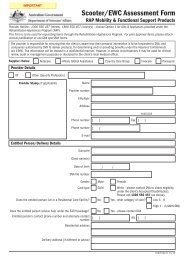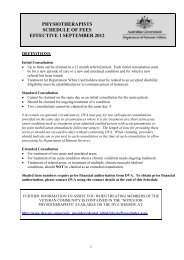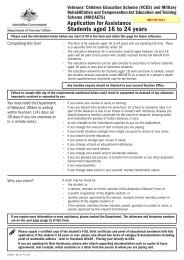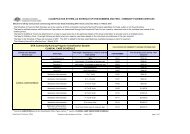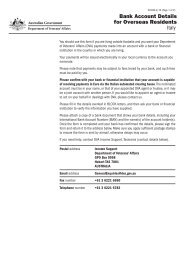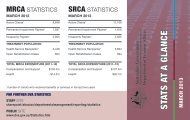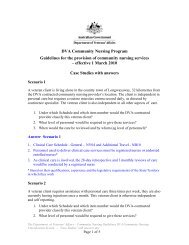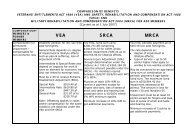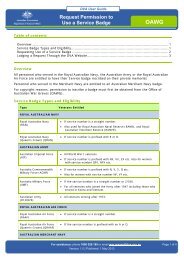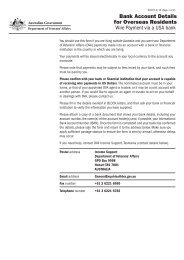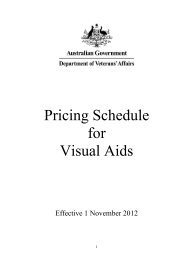Oberon Class Submarine Occupational Hygiene Project Final Report
Oberon Class Submarine Occupational Hygiene Project Final Report
Oberon Class Submarine Occupational Hygiene Project Final Report
You also want an ePaper? Increase the reach of your titles
YUMPU automatically turns print PDFs into web optimized ePapers that Google loves.
General1. Walters (1968) discusses the parameters involved in working in sealed(submarine) environments. He describes the symptoms at various O 2 concentrationsstarting with 17% (at 1 atm.) and a fall off of night vision to loss of consciousness at8-10%. The oxygen is generated by the burning of chlorate candles which isaccompanied by giving off heat and raising the internal temperature of theenvironment or by electrolysis of water. Carbon dioxide is a by-product of exhalation,and in a sealed environment, unless removed, the concentrations will increase and canmanifest themselves as symptoms in those exposed. Carbon dioxide is removed bydrawing air through soda lime or lithium hydroxide packed in cylinders. Other optionsare discussed for generation of O 2 and removal of CO 2 . Walters makes the point thatthere is very little value to have exposure standards (MPCs) unless there is technologyto measure and then comply.Walters discusses the thermal environment on submarines, with a rough temperatureguide of 60-68 °F (16-20 °C) and with a reasonable amount of air movement toachieve an Effective Temperature between 14-17 °C, unless the boats werecompletely sedentary. Higher Effective Temperatures may be tolerable but as theyincrease so does the risk of heat stress and heat stroke. The activity may need to bealtered to reduce the body heat load.Sanitation, diet, storage of food and potable water and disposal of wastes is alsodiscussed. With waste storage and disposal comes the need to prevent entry in to thebreathable atmosphere the various sewage gases and odours which have suspended inthem pathogenic bacteria.Another issue touched on is the impact of living for long periods in artificial light, theimpact on circadian rhythm, and the lack of exercise which would allay boredom andprevent psychological problems as well as improve physical fitness. Other physicalhazards such as noise, vibration, electric and magnetic fields, and atmospheric ionsare discussed.2. Tansy et al, (1979), analysed 10 years of health data from Polaris nuclearsubmarine patrols. Data selection was based on illness that occurred at sea, and thatrequiring one day off from duty. The four most prevalent causes of illness rated indecreasing order were trauma, gastrointestinal problems, respiratory problems anddermal problems. In ninth place was neuropsychiatric problems. Whereas for lostdays, the order was trauma, gastrointestinal, respiratory and systemic illness. In theperiod covered by the study, there was a significant change in CO 2 control in 1967, soa comparison was made before and after this time. The four most prevalent causes ofillness before were the same as after but the order was different in that respiratoryillness was more common than trauma before 1967 when the significant change inCO 2 control occurred. There was no change in the conditions associated with the dayslost. In 5 out of 9 illness categories the submariners had higher rates than the surfaceship persons. The authors proposed that higher CO 2 concentrations on submarinesmay be causally associated with the higher incidence of ureteral calculi. It wasthought that the higher incidence of headache and neuropsychiatric disorders insubmariners may be due to overall stress imposed by lengthy isolation but that wasdiscounted later in the paper. The authors then examined the factors that could haveinfluenced the rates of illness. One such factor proposed was reduction in CO 230



